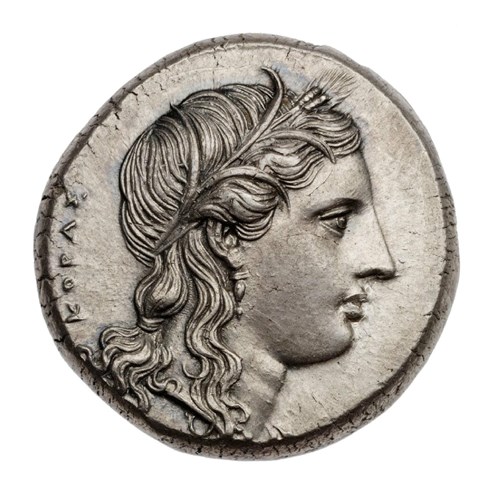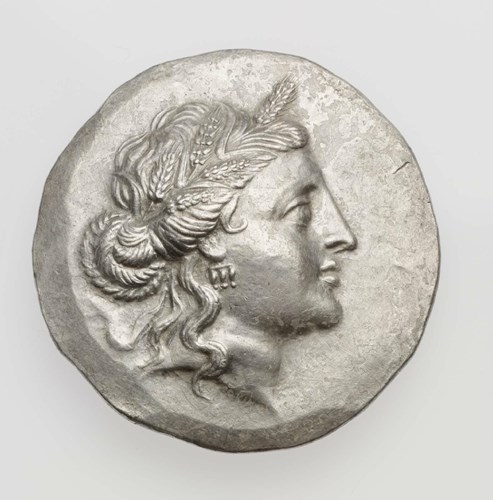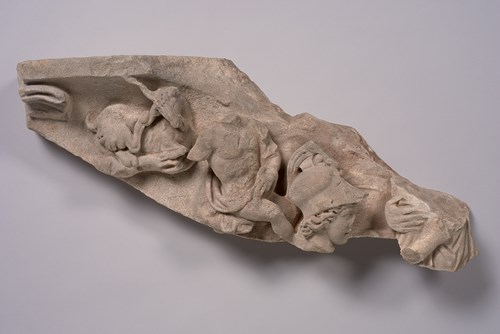The Eleusinian Mysteries promised the initiates a better afterlife. Still, salvation came at a cost, putting to rest the notion that the best things in life are free (although, technically, Demeter’s offer concerned the great beyond, so perhaps we shouldn’t be so cynical about her monetary demands). There was a broad range of fees, taxes, and contributions demanded from initiates and cities to cover the funding of the sanctuary of Demeter and the income of cultic officials.
During the Archaic period, worshippers used metal ingots, metal objects, and jewellery as means of payment for cultic services. The monetisation of markets in the fifth century encouraged the replacement of metal ingots by coins. The exact fees for the Eleusinian Mysteries are unknown. The only pertinent epigraphic evidence concerns the initiation of two slaves in 329 BCE. The costs were thirty drachmas (fifteen for each slave), so we can assume that free citizens would pay at least that much. There is also no firm evidence on the annual number of initiates. Still, the Telesterion had a capacity of three thousand people, which would produce a yearly income of 45,000 drachmas (7.5 talents). To put the fee into context, we should point out that fifteen drachmas equaled two weeks' wages for the average worker in Athens. The initiates also had to consider the cost for food, accommodation, and the trip to Eleusis, which could be pretty significant, especially for those who came from afar.

Tetradrachm of Syracuse with head of Persephone, struck under Agathokles, 310-305 BCE, coin, Boston Museum of Fine Arts © Boston Museum of Fine Arts
The fee was probably paid in Athens before the grand procession on the 18th of Boedromion. The amount was a valuable source of income for the two cities (Athens and Eleusis) and the priests and other cultic officials. The two hieropoioi, appointed by the city to supervise sacrifices and festivals, received a half-obol each day from each initiate (250 drachmas per day). The festival lasted for ten days so that the hieropoioi could expect a handsome revenue of 2,500 drachmas by the end of the Greater Mysteries. The priestess of Demeter received one obol from each initiate, but this amount had to be paid during the Lesser and the Greater Mysteries (for a total income of 1000 drachmas). Each male initiate had to pay five obols to the families of Eumolpidae and Kerykes, who organised the Mysteries and provided the cultic officials. Female initiates paid three obols. Depending on the ratio of male to female initiates in any given year, the two families could expect two thousand drachmas or more. All these fees brought an income of six thousand drachmas, but this was only a fraction of the total income of 45,000 drachmas for the initiation fees. There is no information about what happened to the 39,000 drachmas that remain unaccounted for (45,000 minus 6,000 drachmas).
The fees were sacred money deposited on the Athenian Acropolis. The city had the right to use the remaining amount after all expenditures, and cultic incomes had been paid as necessary. An income of 45,000 drachmas was significant for a sanctuary but not all that great for a city as wealthy and powerful as Athens at the height of its power. It was not even the only source of income associated with the Eleusinian Mysteries. The Athenians enacted a series of decrees in the fifth and fourth centuries to regulate the first-fruit payment (aparche). This religious concept was meant to ensure agricultural fertility, but Athens employed it to reinforce its political and religious leadership of the Delian League. The Athenians ordered their League allies to send the first fruit following ancestral traditions and Delphic oracles. It seems unlikely that Eleusis could enforce this regulation before its annexation by Athens. In 422 BCE. Athens ordered its allies to deliver 1/600th of the annual production of barley and 1/1,200th of the annual production of wheat to Eleusis. Since we do not know the yearly productive capacity of the 330 member city-states of the Delian League, it is hard to estimate the income from aparche. Athens produced on average 580,000 medimnoi of barley and 120,000 medimnoi of wheat, so the Athenian aparche had an approximate value of 3,400 drachmas. The aparche was sold, and the income was used for sacrifices and dedications in honour of Demeter and Persephone.

Tetradrachm of Syros with head of Demeter, 200 BCE, coin, Boston Museum of Fine Arts © Boston Museum of Fine Arts
Six Athenian men were selected as epistatai to administer the sanctuary's finances at Eleusis. The number implies that the income was substantial and required numerous officials in charge of its administration. Apart from sacrifices and dedications, money had to be spent on maintenance, the construction of new buildings, and the organisation of the festivals that were becoming progressively more elaborate, impressive, and costly. The annual maintenance cost in 329/8 BCE was 40,000 drachmas (wages, food, repairs, new constructions etc.). The spondophoroi (messengers who announced the beginning of the Greater Mysteries to cities across the Greek world) alone received 240 drachmas while constructing a wall that year required 2,631 drachmas. The money came from the thesauri of the older and young goddesses (Demeter and Persephone). These thesauri could either be buildings or stone boxes. The same inscription refers to four drachmas paid to a man named Lykes for opening the thesauri, so these must have been boxes with elaborate locks that required the services of a skilled worker.
The thesauri could not hold the income from the initiating fees. It seems more likely that they used them for the money generated from the offering of piglet sacrifices. Each initiate had to sacrifice a piglet (up to three thousand piglets), so the sanctuary may have received three obols from each initiate in exchange for the animal. The sum was then kept in the thesauri. More money was required for additional sacrifices since the goddesses were entitled to bulls, sheep, and goats, while more animals were sacrificed to other deities and heroes in Eleusis (including, Eubouleus, Athena, Triptolemus etc.). In 328 BCE, each god received on average five animals for a total of 43 sheep or goats. The sacrifice of six bulls alone would produce 900 kilograms of meat, enough to supply all the initiates participating in the Mysteries.

Fragment of a Persephone sarcophagus, 170-180 CE, sculpture, Kunsthistorisches Museum ©KHM-Museumsverband







